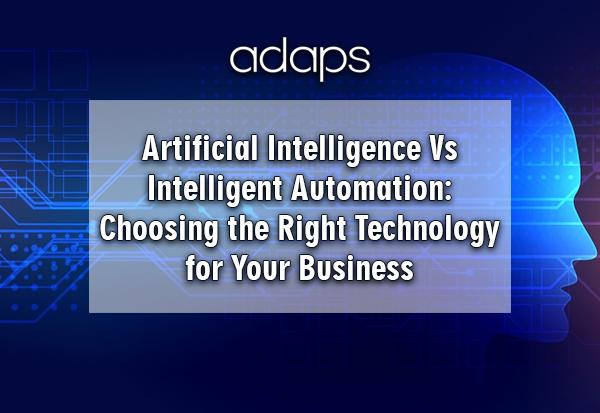Progress in both artificial intelligence and intelligent automation has hailed the way for real-life solutions that can support firms to save resources, time, and money. Both intelligent automation and artificial intelligence are often misinterpreted; however, when it comes to artificial intelligence, it is gaining more popularity. Subsets of artificial intelligence like deep learning and machine learning can support firms screen through their data and undertake real-world solutions like facial recognition or counting of individuals. Intelligent automation can further support firms by using existing data and automation of existing data analysis, eventually helping to enhance workflow and operations, as well as decreasing unnecessary responses.
Difference Between Artificial Intelligence and Intelligent Automation
Artificial Intelligence could be used in automation, but for this, businesses need to power the automated machine with gigabits. This huge quantity of data can come in the pattern of graphs, neural networks, and machine learning software. The code complexity decides how well a system can mimic human working. Automation does not have the desire for huge data sets, and it can work without that. But, if you intend to make a prolific AI and if you want to use AI in your company, you must feed AI with tons of data. The data might be a compilation of the work results, market pricing, stats, etc.
Artificial Intelligence could be a bit unpredictable sometimes, just like humans. However, the automation will identically do the same work as it was intended till human interference changes its code manually. Automation is the process of mimicking of well-defined operations to decrease human errors in mission-critical situations. At the meantime, Artificial Intelligence is the mix of engineering and science that injects the intelligence into machines. AI will not only mimic the human mind working and activities, but also AI will learn while it is working and achieves greater performance in the task with an ever-expanding range of applications.
Finding the Difference in User Cases
Data Lake
As per the latest report, 60% of the data produced by organisations around the globe goes unused and cannot be added in its yearly analysis reports. If we observe the data, we can understand the significant difference between artificial intelligence and automation. Automation techniques like automatic testing, mechanical labour, operational equipment, and control systems are intended to deliver Automated solutions; therefore, they use minimal data logs to produce output. The final result is programmed to keep constant, for example, sending automated emails and automated messages to customers.
The contrast of automation is how AI works. AI requires data storehouses to power its complicated algorithms to obtain the results. AI utilises data from model training to value generation, graphs, neural networks, and deep machine learning algorithms, all of which need data to make Artificial Intelligence work.
Rule-based Tasks
While automation needs a decision making tree or rule-based approach, artificial intelligence is triggered utilising tons of data to learn and to process outputs. Below the rule-based methodology, programmed automated solutions in an “if this, then that” fashion practising linguistics and event triggers. With little data preparation, rule-based automation can be integrated easily into a business model.
However, artificial intelligence fundamentals are established in the approach of machine learning. It needs developers to integrate the software with machine learning algorithms, allowing the model to identify patterns and produce data-driven results.


